Affordable four-wheeled transport will always be one of the first options for consumers these days, especially for those who have the means to purchase one for themselves. A shelter against the sun and other elements – like a virus maybe? – makes cars an attractive proposition over two-wheeled buddies.
For this segment, Suzuki Philippines presents the 2020 S-Presso. It’s the most affordable brand-new Japanese car in the market today, effectively replacing the Alto 800 in Suzuki’s local lineup.
At just a hair over half-a-million pesos, what can the S-Presso offer for the discerning Filipino buyer? Is it too much of a compromise? More importantly, what do I mean by this review’s headline? Read along to find out.
Exterior
Straightforward and unapologetic – those were the two words that best describe the S-Presso’s styling. It doesn’t have useless lines and cuts, but it doesn’t have flair either. What it does have is a retro-inspired cuteness akin to what the Suzuki Jimny has – and it works, at least in my eyes and to people I got to interact with as I tested the unit.
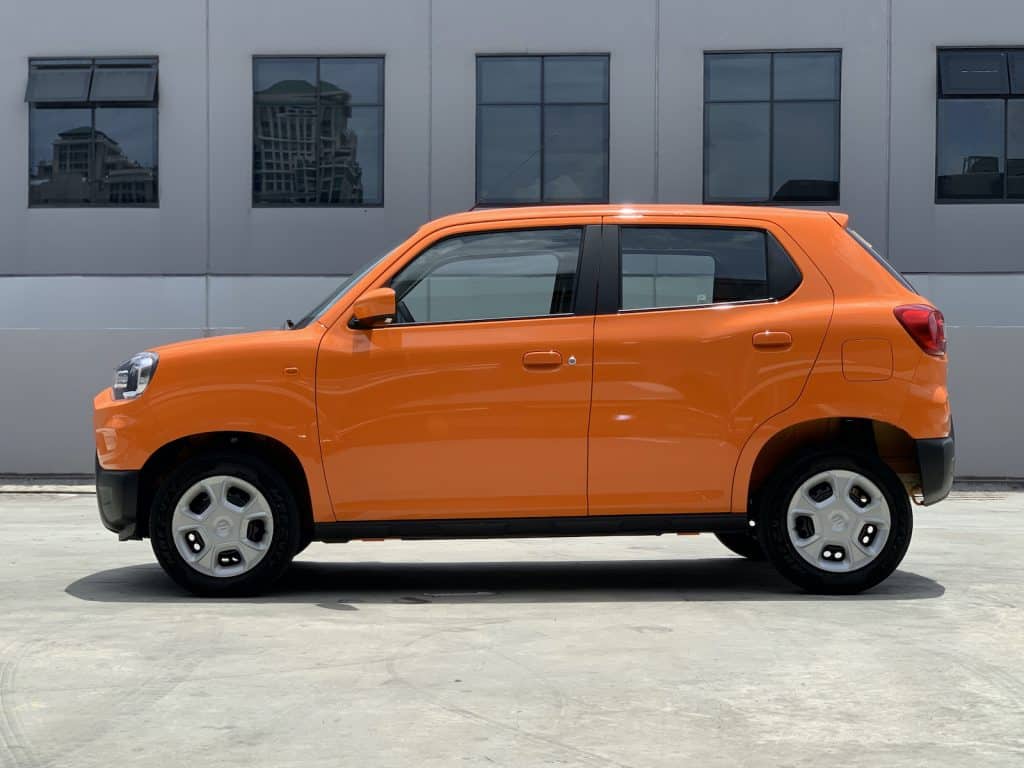
The standard equipment isn’t flashy as well. Halogens, lack of fog lamps, steel wheels, fender-mounted turn signals – you’ll find these things in entry-level units, and that’s what the S-Presso is. I just wish that the headlamps illuminate the road better at night. So yes, you can add that one to your checklist of upgrades.
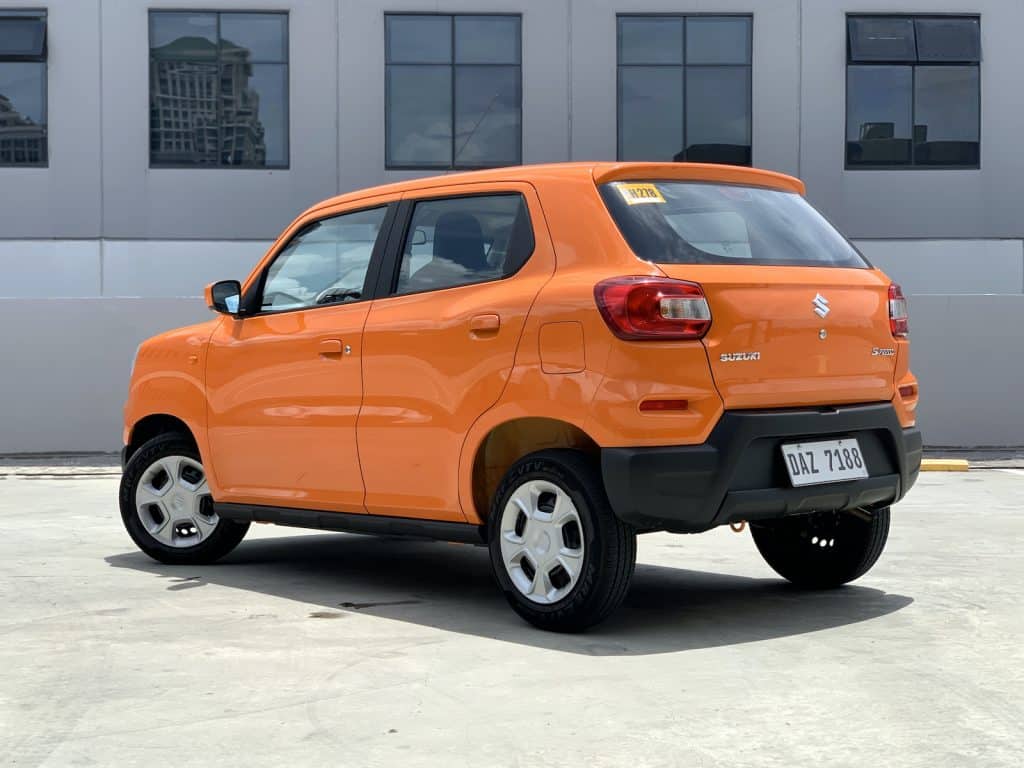
And oh, one thing you should note is that the S-Presso’s really small – even narrower than your typical small hatchbacks like the Toyota Wigo or Honda Brio. It’s more of a lifted hatchback rather than a crossover or an SUV. Even Suzuki Philippines classifies the S-Presso as a hatchback, so let’s not fool ourselves by calling it something else, shall we?
Interior
Surprisingly, the S-Presso isn’t as cramped as I expected based on its exterior dimensions. Knee- and head-room for my height and build (I’m 5’6” with medium build, around 50 percent body fat) were just adequate for comfortable seating at the helm, but social distancing with your front passenger is kind of impossible.
The rear cabin space is abundant as well for two people; a third one in the middle would be a violation of privacy, though. One gripe would be the limited seat adjustment for the driver (just slide and recline) – it took me two days before I got my ideal driving position.
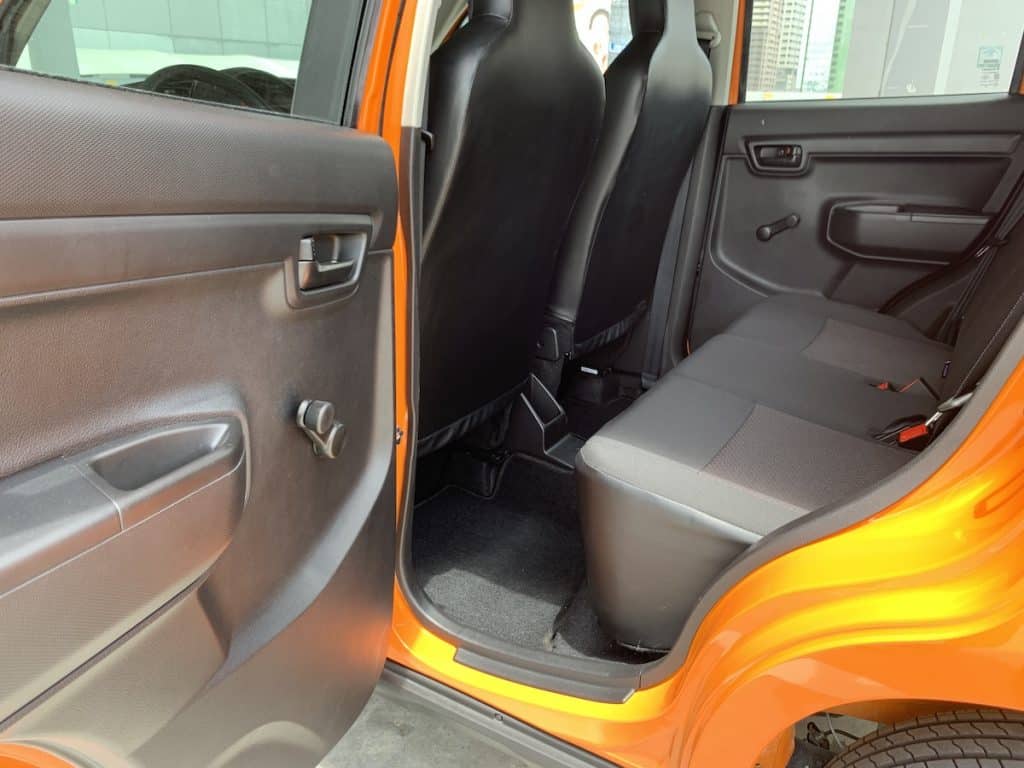
Again, as expected at this price point, Suzuki extensively used plastics in the S-Presso to cut costs. But, as with other small Suzuki cars, the company was able to execute these polymers well, playing with textures and finish. A great job, I must say. Another great job would be the cargo area, which is spacious enough to fit four water gallons, with the option to maximize by folding the rear backrests down. Not bad for a car of this size.
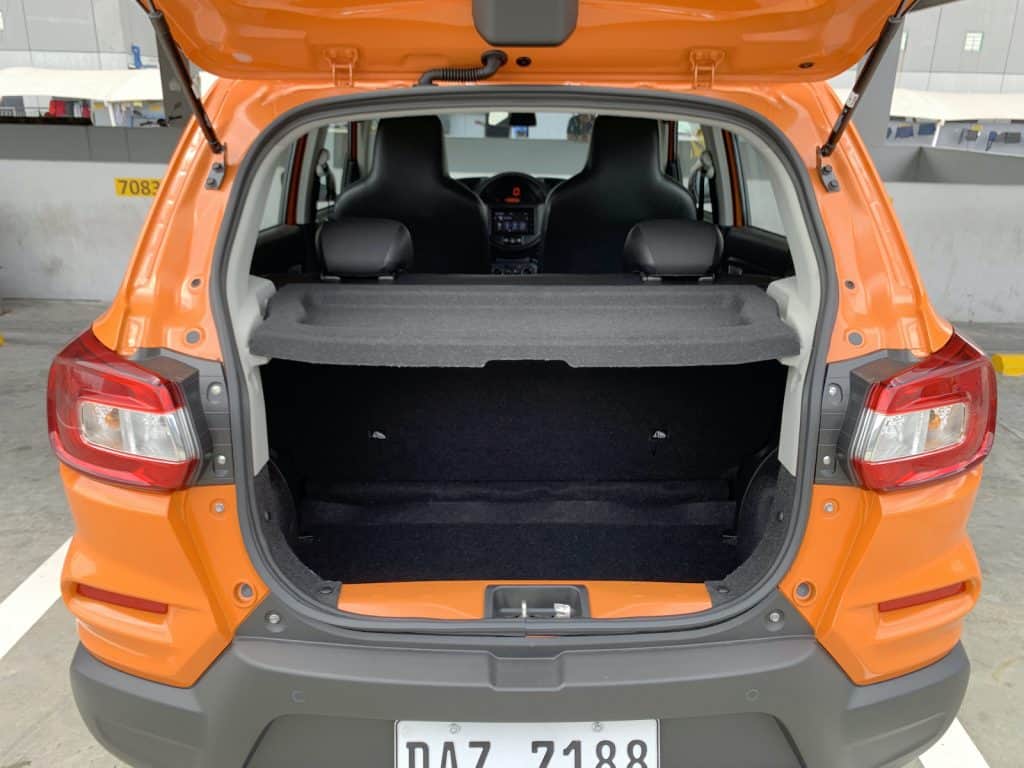
I wish I could say the same praises for the fifth door that lacks an exterior handle, which meant that I had to open it through a lever on the driver’s side or by using the keys.
Tech & Safety
Here’s where the S-Presso’s kind of a mixed bag. While the seven-inch Android multimedia head unit with Bluetooth and USB was something I didn’t expect, the manual side mirror adjusters and rear window rollers are things kids would be confused at. The last time I saw these in a car was on brand new vehicles in the ‘90s; my editor argued that it was from the ‘80s. I didn’t argue with him, I wasn’t around in that decade yet.
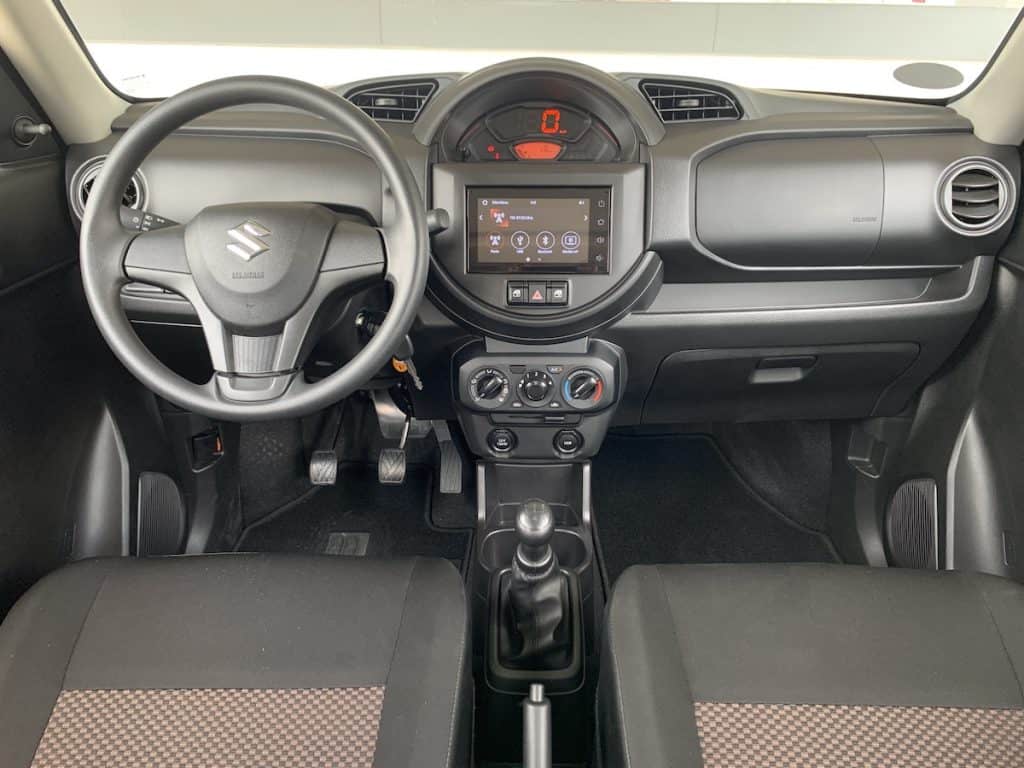
Kidding aside, technology and safety in the S-Presso are trimmed down to essentials, which means there are four three-point seatbelts (the rear middle one is just a lap belt), two speakers (not the best sounding but will suffice), ABS (thankfully), and manual air-conditioning (it works well on a hot day).
At least the door locks are centralized and the digital central-mounted instrument cluster has an old-school charm. And yes, the S-Presso has rear parking sensors – not that you need them for this pint-sized vehicle, but we’ll take that.
Driving & Handling
Speaking of the central-mounted instrument cluster, I noticed that it lacked a tachometer. And since this is a manual car, I had to play the gear-shifting by ear, literally, something that isn’t hard to do but might confuse beginner drivers. Good thing, the S-Presso has a curiously soft clutch pedal and gear lever. It has its downsides, like mis-shifting occasionally, but that softness made the car not tiring to drive even on stop and go situations. Yes, I’m just as surprised as you are.
Power delivery is remarkably above average, considering that all that juice comes from a 1.0-liter engine that just makes 67hp and 90Nm of torque. It’s the same engine found in the Celerio but since the S-Presso’s lighter by almost 100 kg, the engine isn’t overworked. With two people on board, the pull to centenary isn’t hard work, but the S-Presso can really use more tightness with its steering for better stability at high speeds.
Speaking of steering, the S-Presso was perky and zippy, taking instructions at will. Sure, it could use some more ground feedback but for city use, it was a breeze. As for the suspension, you can’t expect much as it was relatively stiff, but you’ll be safe from curbs and deep potholes because of its 180mm ground clearance.
Probably my biggest bleat would be this car’s NVH insulation. There were times when I had to check if one of the windows were open even while sitting still in traffic. But then again, cutting costs and weight has its price.
Fuel Consumption
No surprise here, the S-Presso clocked in incredible fuel economy numbers both in the city and on the highway. Combined heavy traffic, light traffic, and highway run returned 15.7 km/L, while a 30-minute stint on the expressway at 90 km/h got me 24.8 km/L. Those numbers were taken with two people on board and no luggage. Impressive.
Verdict
After a week of testing, taking note of its ups and down, the Suzuki S-Presso reminds me that we’ve been too spoilt with numerous driving nannies. Yes, the window rollers and the manual side mirror adjusters would be a point of conversation for some people but that is part of its overall charm. I like it.
For P518,000, you get a personal mobility machine that’s arguably cute and doesn’t pretend to be something it isn’t. An honest vehicle, I must say, and a worthy replacement to the aging Alto 800. If you’re in the market for an affordable vehicle, the S-Presso is something worth checking out – niggles included.

